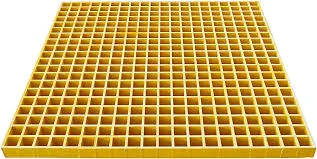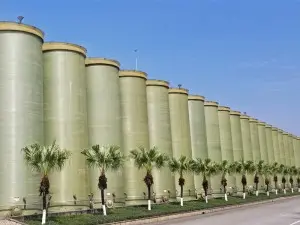
-
 Afrikaans
Afrikaans -
 Albanian
Albanian -
 Amharic
Amharic -
 Arabic
Arabic -
 Armenian
Armenian -
 Azerbaijani
Azerbaijani -
 Basque
Basque -
 Belarusian
Belarusian -
 Bengali
Bengali -
 Bosnian
Bosnian -
 Bulgarian
Bulgarian -
 Catalan
Catalan -
 Cebuano
Cebuano -
 China
China -
 China (Taiwan)
China (Taiwan) -
 Corsican
Corsican -
 Croatian
Croatian -
 Czech
Czech -
 Danish
Danish -
 Dutch
Dutch -
 English
English -
 Esperanto
Esperanto -
 Estonian
Estonian -
 Finnish
Finnish -
 French
French -
 Frisian
Frisian -
 Galician
Galician -
 Georgian
Georgian -
 German
German -
 Greek
Greek -
 Gujarati
Gujarati -
 Haitian Creole
Haitian Creole -
 hausa
hausa -
 hawaiian
hawaiian -
 Hebrew
Hebrew -
 Hindi
Hindi -
 Miao
Miao -
 Hungarian
Hungarian -
 Icelandic
Icelandic -
 igbo
igbo -
 Indonesian
Indonesian -
 irish
irish -
 Italian
Italian -
 Japanese
Japanese -
 Javanese
Javanese -
 Kannada
Kannada -
 kazakh
kazakh -
 Khmer
Khmer -
 Rwandese
Rwandese -
 Korean
Korean -
 Kurdish
Kurdish -
 Kyrgyz
Kyrgyz -
 Lao
Lao -
 Latin
Latin -
 Latvian
Latvian -
 Lithuanian
Lithuanian -
 Luxembourgish
Luxembourgish -
 Macedonian
Macedonian -
 Malgashi
Malgashi -
 Malay
Malay -
 Malayalam
Malayalam -
 Maltese
Maltese -
 Maori
Maori -
 Marathi
Marathi -
 Mongolian
Mongolian -
 Myanmar
Myanmar -
 Nepali
Nepali -
 Norwegian
Norwegian -
 Norwegian
Norwegian -
 Occitan
Occitan -
 Pashto
Pashto -
 Persian
Persian -
 Polish
Polish -
 Portuguese
Portuguese -
 Punjabi
Punjabi -
 Romanian
Romanian -
 Russian
Russian -
 Samoan
Samoan -
 Scottish Gaelic
Scottish Gaelic -
 Serbian
Serbian -
 Sesotho
Sesotho -
 Shona
Shona -
 Sindhi
Sindhi -
 Sinhala
Sinhala -
 Slovak
Slovak -
 Slovenian
Slovenian -
 Somali
Somali -
 Spanish
Spanish -
 Sundanese
Sundanese -
 Swahili
Swahili -
 Swedish
Swedish -
 Tagalog
Tagalog -
 Tajik
Tajik -
 Tamil
Tamil -
 Tatar
Tatar -
 Telugu
Telugu -
 Thai
Thai -
 Turkish
Turkish -
 Turkmen
Turkmen -
 Ukrainian
Ukrainian -
 Urdu
Urdu -
 Uighur
Uighur -
 Uzbek
Uzbek -
 Vietnamese
Vietnamese -
 Welsh
Welsh -
 Bantu
Bantu -
 Yiddish
Yiddish -
 Yoruba
Yoruba -
 Zulu
Zulu
Feb . 06, 2025 05:03
Back to list
Steps
FRP (Fiberglass Reinforced Plastic) ductwork has emerged as a revolutionary solution in the HVAC (Heating, Ventilation, and Air Conditioning) industry, offering numerous advantages over traditional ductwork systems like metal or PVC. Having worked in the field of HVAC systems for over a decade, I have observed the growing demand for FRP ductwork, driven by its distinctive properties and versatile applications. This article explores the reasons why FRP ductwork is becoming indispensable, drawing from my experience and professional expertise, and examining its authoritativeness and trustworthiness as a modern product.
One cannot overlook the environmental considerations in today's construction practices. FRP ductwork supports sustainable building designs due to its durability and minimal environmental footprint. Drawing from data and personal insights propounded by peers in the sustainability sector, the production process of FRP is comparatively eco-friendly, reducing greenhouse gas emissions and energy use. Furthermore, its extended lifespan means less frequent replacements and less waste, aligning with green building certifications and regulations. While discussing FRP ductwork’s unmatched advantages, the inherent trustworthiness of this system lies in its compliance with industry standards and certifications. Trust is further consolidated by the wealth of empirical data supporting FRP’s performance metrics over decades. I have often referenced peer-reviewed studies and real-life case studies in my consultancy work to reassure stakeholders of its reliability. In conclusion, FRP ductwork encapsulates the blending of innovation, efficiency, and sustainability, making it a forerunner in modern ducting solutions. Through firsthand experience and the observation of industry trends, it's clear that FRP ductwork not only addresses current HVAC challenges but anticipates future needs. Stakeholders looking for durable, cost-effective, and efficient duct systems will find a trusted ally in FRP ductwork, thereby securing a robust return on investment and contributing to the advancement of sustainable infrastructure.


One cannot overlook the environmental considerations in today's construction practices. FRP ductwork supports sustainable building designs due to its durability and minimal environmental footprint. Drawing from data and personal insights propounded by peers in the sustainability sector, the production process of FRP is comparatively eco-friendly, reducing greenhouse gas emissions and energy use. Furthermore, its extended lifespan means less frequent replacements and less waste, aligning with green building certifications and regulations. While discussing FRP ductwork’s unmatched advantages, the inherent trustworthiness of this system lies in its compliance with industry standards and certifications. Trust is further consolidated by the wealth of empirical data supporting FRP’s performance metrics over decades. I have often referenced peer-reviewed studies and real-life case studies in my consultancy work to reassure stakeholders of its reliability. In conclusion, FRP ductwork encapsulates the blending of innovation, efficiency, and sustainability, making it a forerunner in modern ducting solutions. Through firsthand experience and the observation of industry trends, it's clear that FRP ductwork not only addresses current HVAC challenges but anticipates future needs. Stakeholders looking for durable, cost-effective, and efficient duct systems will find a trusted ally in FRP ductwork, thereby securing a robust return on investment and contributing to the advancement of sustainable infrastructure.
Next:
Related Products









